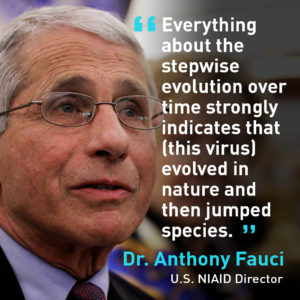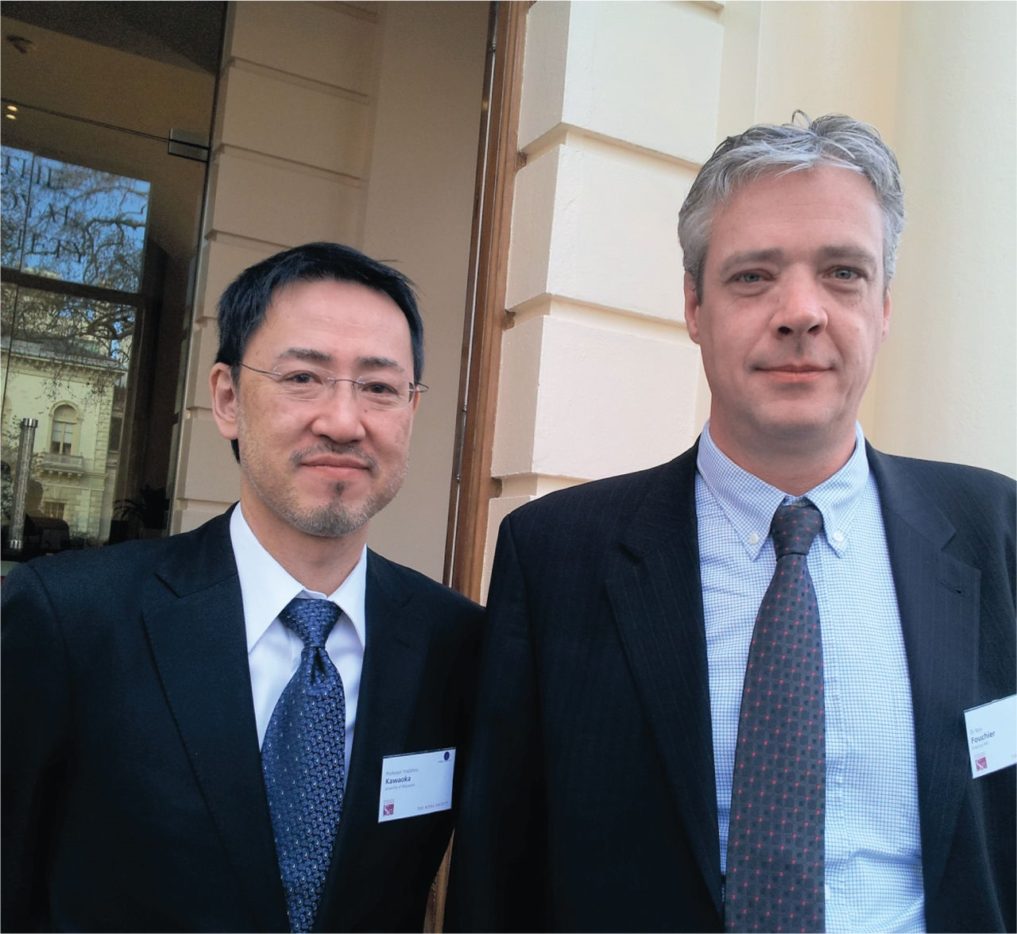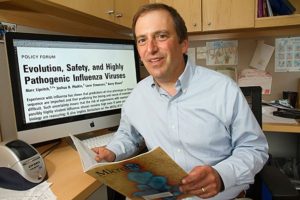gain of function что это такое
gain of function
1 gain function
2 gain function
3 gain-and-loss function
4 gain function
5 gain function
6 gain-and-loss function
См. также в других словарях:
gain-of-function mutation — a mutation that alters the gene product so that it is increased in quantity or possesses a new function or other new pattern of gene expression … Medical dictionary
gain of function mutation — Gene mutation that results in higher than normal levels of activity of the gene product, for example by deletion of a regulatory phosphorylation site on the protein. Examples are oncogenic mutations in genes involved in growth control … Dictionary of molecular biology
Gain compression — in an electronic amplifier circuit is a reduction in differential or slope gain caused by nonlinearity of the transfer function of the amplifying device. This nonlinearity may be caused by heat due to power dissipation, or by overdriving the… … Wikipedia
Gain-bandwidth product — The gain bandwidth product (GBW or GB) for an amplifier is the product of the open loop gain (constant for a given amplifier) and its 3 dB bandwidth. Relevance to design This quantity is commonly specified for operational amplifiers, and allows… … Wikipedia
function keys — The set of programmable keys on the keyboard that can perform special tasks assigned by the current application. Most keyboards have 10 or 12 function keys (F1 to F10 or F1 to F12), some of which are used by an application as shortcut keys … Dictionary of networking
Loss-of-function — Eine Loss of function Mutation (Funktionsverlustmutation) ist in der Genetik eine Genmutation, bei der das betroffene Gen funktionslos wird. Ist der Funktionsverlust vollständig, spricht man von einem Nullallel oder amorphen Allel. Bleibt ein… … Deutsch Wikipedia
Loss-of-function-Mutation — Eine Loss of function Mutation (Funktionsverlustmutation) ist in der Genetik eine Genmutation, bei der die Funktionsfähigkeit des betroffenen Genprodukts eingeschränkt wird. Handelt es sich um eine Deletion des Gens, spricht man von einem… … Deutsch Wikipedia
Cumulative elevation gain — In running, cycling, and mountaineering, cumulative elevation gain refers to the sum of every gain in elevation throughout an entire trip. It is sometimes also known as cumulative gain or elevation gain, or often in the context of mountain travel … Wikipedia
Window function — For the term used in SQL statements, see Window function (SQL) In signal processing, a window function (also known as an apodization function or tapering function[1]) is a mathematical function that is zero valued outside of some chosen interval … Wikipedia
Discounted cumulative gain — (DCG) is a measure of effectiveness of a Web search engine algorithm or related applications, often used in information retrieval. Using a graded relevance scale of documents in a search engine result set, DCG measures the usefulness, or gain, of … Wikipedia
Мутации доминантно-негативные (gain-of-function)
Проявление таких мутаций зависит от их внутригенной локализации. Чем ближе мутации к 5,-концу гена, т. е. к началу транскрипции, тем короче их белковые продукты. Такие абортивные (truncated) белки не способны к модификациям и быстро деградируют.
Фенотипическое проявление замен нуклеотидов в кодонах так называемых миссенс-мутаций зависит от природы соответствующих аминокислотных замен в белке и от функциональной значимости того домена, в котором это произошло. Так, замены аминокислот в активных центрах белков могут сопровождаться полной потерей его функциональной активности, тогда как даже значительно более серьезные нарушения в других частях белка часто оказывают существенно меньшее влияние на фенотип. Мутации на стыке экзонов и интронов (так называемые сплайсинговые мутации ) часто нарушают процессинг первичного РНК-транскрипта, в результате чего происходит либо неправильное вырезание соответствующей интронной области и трансляция бессмысленного удлиненного белка, не защищенного от протеолитического действия внутриклеточных ферментов, либо вырезание экзонов и образование делетированного белка. В обоих случаях сплайсинговые мутации, как правило, обусловливают тяжелое течение болезни.
Нарушения в регуляторных областях генов сопровождаются количественными изменениями соответствующего продукта и не затрагивают структуры и функциональной активности белка. Проявление таких мутаций определяется, в конечном счете, пороговым уровнем концентрации белка, при котором его функция еще сохраняется. Как правило, регуляторные мутации менее серьезны и обладают более выраженным плейотропным (множественным) эффектом по сравнению с мутациями структурных генов.
What is Gain-of-Function Research & Who is at High Risk?
“Gain-of-function” is the euphemism for biological research aimed at increasing the virulence and lethality of pathogens and viruses. GoF research is government funded; its focus is on enhancing the pathogens’ ability to infect different species and to increase their deadly impact as airborne pathogens and viruses. Ostensibly, GoF research is conducted for biodefense purposes. These experiments, however, are extremely dangerous. Those deadly science-enhanced pathogens can, and do escape into the community where they infect and kill people. What’s more, this line of research can be used for biological warfare.
In 1992, Meryl Nass, MD, analyzed the characteristics of an anthrax epidemic in Zimbabwe, Rhodesia in 1978-1980, that was claimed to be a natural occurrence. Dr. Nass demonstrated that the pattern of the epidemic, the spread, and weather conditions, could not have occurred due to a natural event; it must, therefore, have been triggered as a bioweapon. She reported her findings in the journal Physicians for Social Responsibility Quarterly, 1992. [1]
Government officials and the recipients of government grants and contracts for “gain-of-function” research argue that these experiments are critical for understanding the subtle changes that can make a bird virus a pandemic threat.
Dr. Anthony Fauci, who has headed the National Institute of Allergy and Infectious Diseases (NIAID) since 1984, has played a major role in promoting and funding gain-of-function research, both in the US and China. Newsweek reported: “He argued that the research was worth the risk it entailed because it enables scientists to make preparations [ ] that could be useful if and when a pandemic occurred.”
However, GoF research is defended by a closed circle of scientists within government and those who are contracted by government to conduct this line of research.
Drs. Yoshihiro Kawaoka & Ron Fouchier
The UK Independent reported: “An increasing number of scientists outside the influenza field have expressed concern over attempts to deliberately increase the human transmissibility of the H5N1 bird-flu virus. This is done by mutating the virus so that it can pass by airborne droplets between laboratory ferrets, the standard “animal model” of human influenza.”
Scientists, who are committed to the precautionary principle in medicine, medical research, and in public health policy, eschew GoF experimentation. These critics cite the Nuremberg Code prohibition against conducting experiments that pose a risk to human life. Such experiments “should be undertaken only if they provide humanitarian benefits that sufficiently offset the risks and if these benefits are unachievable by safer means.”
The risks posed by influenza GoF experiments include frequent documented escapes of deadly pathogens into the community, which have a potential for triggering a pandemic. These risks far outweigh any speculative benefits. What’s more, as Dr. Marc Lipsitch of Harvard and Dr. Alison Galvani of Yale argue:“the creation and manipulation of potential pandemic pathogens are too risky to justify…there are safer more effective experimental approaches that are both more scientifically informative and more straightforward to translate into improved public health.” [PLoS Medicine, 2014][4]
Prof. Mark Lipsitch, PhD
Dr. Marc Lipsitch, director of the Center for Communicable Disease Dynamics at Harvard School of Public Health stated that recent disease-enhancing experiments “have given us modest scientific knowledge and done almost nothing to improve our preparedness for pandemics, and yet [these experiments] risked creating an accidental pandemic.”[5]
Alison Galvani, PhD
The considerable risk of laboratory enhanced transmitability of influenza viruses was obvious. Dr. Andrew Pavia, Chief, Division of Pediatric Infectious Diseases at the University of Utah stated: “A readily transmitted H5N1 virus could be extraordinarily lethal; therefore, the risk for accidental release is significant, and deliberate misuse of the data to create a biological weapon is possible.” [6]
The controversy escalated when the National Science Advisory Board for Biosecurity (NSABB) issued its recommendation (December 2011) that the controversial H5N1 reports be published with significant redactions.“Methodological and other details that could enable replication of the experiments by those who would seek to do harm” are to be redacted. The research and the NSABB recommendation polarized the scientific community which recognized that the easily transmitted H5N1 laboratory creation could be extraordinarily lethal. This laboratory-engineered virus poses a significant risk for accidental release into the community.[7]
Dr. Michael Osterholm
Michael Osterholm, director of the Center for Infectious Disease Research and Policy (CIDRAP) at the University of Minnesota and a vocal critic of the decision to publish the H5N1 research, stated that the flu research community has not rigorously weighed the risks and benefits of gain-of-function studies. He stated that proponents of “gain-of-function” research have overstated the benefits, including the potential for developing better vaccines and antiviral drugs, or improving surveillance measures. “We still do H5N1 surveillance in the same way a year later.”
Adel A. F. Mahmoud, an infectious disease specialist at Princeton University and the former president of Merck Vaccines is quoted in Science: “The scientific justification presented for doing this work is very flimsy, to put it mildly, and the claims that it will lead to anything useful are lightweight… The mutations guided nothing.”
Richard Ebright, PhD
Richard Ebright, a molecular biologist at Rutgers University in Piscataway, New Jersey, cautioned that the security precautions are “insufficient and amazingly lame.” He stated in the journal Science:
“this work should never have been done”
A New York Times editorial in 2012, dubbed the experiment “An Engineered Doomsday.”
“Now scientists financed by the National Institutes of Health have shown in a laboratory how [an avian influenza virus] could kill tens or hundreds of millions of people if it escaped confinement or was stolen by terrorists. […]
The most frightening research was done by scientists at the Erasmus Medical Center in Rotterdam, who sought to discover how likely it is that the “bird flu” virus, designated A(H5N1), might mutate from a form that seldom infects or spreads among humans into a form highly transmissible by coughing or sneezing. Thus far the virus has infected close to 600 humans and killed more than half of them, a fatality rate that far exceeds the 2 percent rate in the 1918 influenza pandemic that killed as many as 100 million people.
… it looks like the research should never have been undertaken because the potential harm is so catastrophic and the potential benefits from studying the virus so speculative.”
Professor Lord May of Oxford, the former president of the Royal Society and a former chief science adviser to the UK government, is an outspoken critic about this line of research.
“The work they are doing is absolutely crazy. The whole thing is exceedingly dangerous.”
Yes, there is a danger, but it’s not arising from the viruses out there in the animals, it’s arising from the labs of grossly ambitious people.” [5]
He noted China’s poor safety track record: “The record of containment in labs like this is not reassuring. They are taking it upon themselves to create human-to-human transmission of very dangerous viruses. It’s appallingly irresponsible.”[Independent, 2013
Prof. Simon Wain-Hobson, PhD
Professor Simon Wain-Hobson, PhD, an eminent virologist at the Pasteur Institute in Paris is an outspoken critic of viral-engineering, and the risk this research poses. In a column in the journal Nature (2013), Dr. Wain-Hobson noted:
“Influenza virologists are going down a blind alley and the powers that be are blindly letting them go down that alley.”
He said it is very likely that some or all of “these hybrids could pass easily between humans and possess some or all of the highly lethal characteristics of H5N1 bird-flu.”
H5N1 GOF work — indeed all virological GOF work — should be suspended until virologists open up and engage in public discussion of their work and the issues it raises. Given that the flu community failed utterly to use the year-long hiatus to good effect, it is clear that an independent risk–benefit assessment of GOF work is needed.” Read H5N1 Viral-Engineering Dangers, Nature.pdf
Prof. Wain-Hobson stated: “The virological basis of this work is not strong. It is of no use for vaccine development and the benefit in terms of surveillance for new flu viruses is oversold.” He emphasized in Nature News the fact that this chimeric virus “grows remarkably well” in human cells: “if the virus escaped, nobody could predict the trajectory.”
As veteran investigative reporter, Sam Husseini, the communications director of the non-profit, Institute for Public Accuracy, who has closely followed this line of research, states there are probably hundreds of high containment biosafety (BSL-3 and BSL-4) laboratories. As of 2017, at least 263 laboratories were registered in the US as level BSL-3 and level BSL-4.
According to a report by the Center for Arms Control and Non-Proliferation, the probability of a flu virus release from a government laboratory into the community could become pandemic requires that “the Precautionary Principle should apply [in proceeding with this line of research]”. Numerous pathogen escaped accidents have occurred at BSL-3 and BSL-4 labs.
The journal SCIENCE reported that multiple laboratory accidents at CDC’s highest security laboratories released smallpox vials, anthrax samples, H5N1 influenza samples, and H9N2 avian influenza pathogen. The lapses, Science reported, “at the world-renowned infectious disease research agency, are sure to raise questions about safety at other labs studying highly pathogenic agents, including university labs that are modifying influenza strains to make them more virulent.:
Former CDC director, Dr. Thomas Frieden stated:
“whatever you think about [such so-called gain-of-function studies],“I think it’s clearly the case that these incidents indicate that we need to really ensure that whatever work is done needs to be done safely and securely.”
These accidents led the government to temporarily suspend funding for gain-of-function research from 2014 to 2017 for SARS, MERS and avian flu viruses.
When the “Ban on Making Lethal Viruses [was] Lifted,” the review process became even more secretive and opaque. Dr Francis Collins, head of the NIH, announced that there would be no public disclosure about the projects funded by the government. Critics, including microbiologist Richard Ebright of Rutgers University stated the lack of openness is “disturbing and indefensible.” He stated that clearer minimum safety standards and a mandate that the benefits ‘outweigh’ the risks were needed, rather than merely ‘justifying’ them.”
The Washington Post reported that in January 2018, urgent cables from the US Embassy warned that the Wuhan laboratory’s operations had serious safety problems. One of the cables specifically warned that the lab’s work on bat coronaviruses and their potential human transmission represented a risk of a new SARS-like pandemic.[8]
Currently, a heated disagreement about the origin of the global COVID-19 pandemic is raging because the proponents of GoF research – those who fund and those who receive funds – are desperate to distance the COVID-19 pandemic, and the Chinese laboratory that has engaged in high risk GoF experiments; experiments that put humanity at risk.
Read: Is COVID-19 the Result of a US Government- Funded Experiment in China?
“Theoretically, an accident during such activities could prompt an outbreak. If researchers, for example, had found SARS-CoV-2, the virus that causes covid-19, and cultured the virus in the lab, it could have infected humans as the result of a mishap.”
Daszak, who has a multi-million dollar stake in Chinese bat research, dismissed the possibility outright: “I have never heard anything suspicious from this lab. It’s a preposterous idea”.
Honest scientists recognize and warn about the danger posed by GoF research and the potential for unleashing a lethal pandemic. Documented indisputable evidence confirms continued safety hazards at the high security laboratories from which pathogens regularly escaped into the community.
A report by GM Watch (May 20th) focuses on the hazardous bat and coronavirus experiments at the Wuhan laboratory. Dr Richard Ebright alerted the public about evidence that the Wuhan Institute and US-based researchers were genetically engineering bat viruses to investigate their ability to infect humans. He stated that they experimented with commonly used methods that leave no sign or signature of human manipulation. He cited a scientific paper published in PLoS (2017) by Wuhan scientists, including Shi Zhengli, the virologist leading the research into bat coronaviruses, who worked in collaboration with Peter Daszak.
that funding for the experiment was shared between Chinese and US institutions, including the National Institutes of Health and US Agency for International Development.
“The researchers report having conducted virus infectivity experiments where genetic material is combined from different varieties of SARS-related coronaviruses to form novel “chimeric” versions. This formed part of their research into what mutations were needed to allow certain bat coronaviruses to bind to the human ACE2 receptor – a key step in the human infectivity of SARS-CoV-2.
The WIV scientists did this, Ebright points out, “using ‘seamless ligation’ procedures that leave no signatures of human manipulation”. This is noteworthy because it is a type of genetic engineering that Andersen and his team excluded from their investigation into whether SARS-CoV-2 could have been engineered – and it was in use at the very lab that is the prime suspect for a lab escape.
The evidence rebuts claims by journalists and some scientists that the SARS-CoV-2 virus responsible for the current COVID-19 pandemic could not have been genetically engineered because it lacks the “signs” or “signatures” that supposedly would be left behind by genetic engineering techniques.”
Dr. Ebright cited a just-published pre-print scientific report by the Wuhan scientists who describe how they “spiked proteins from bat SARS-related CoV (SARSr-CoV), among other coronaviruses, to bind to bat and human ACE2 receptors – in other words, how efficiently they infect humans.” He points out that the paper states, “All work with the infectious virus was performed under biosafety level 2 conditions” which is not suitable for such high risk experimentation. This level is suitable for work involving agents of only “moderate potential hazard to personnel and the environment”.
Jonathan Latham, PhD
Dr Jonathan Latham, a virologist, is Executive Director of the Bioscience Resource Project, which conducts independent scientific analysis of genetic engineering and its risks. He is the Editor of Independent Science News. He criticised the research on bat coronaviruses that has been taking place in Wuhan and the US. He argues that these experiments are “providing an evolutionary opportunity” for such viruses “to jump into humans.” He emphasized that the experiments were “providing opportunities for contamination events and leakages from labs, which happen on a routine basis”.
GM Watch notes: “Given that lab accidents are common, including in China where the SARS virus has escaped from high-level containment facilities multiple times, the details emerging about the research activities of the WIV and US scientists again underline the need for a credible independent investigation of the most forensic kind into the origins of the current pandemic. And a broader investigation is also needed into the full range of biological threats arising from various areas of potentially hazardous but laxly regulated biotechnology research.”
Inside America’s Secretive Biolabs, an investigative report by USA Today May 2015 reveals hundreds of accidents, safety violations and near misses put people at risk.
“Vials of bioterror bacteria have gone missing. Lab mice infected with deadly viruses have escaped, and wild rodents have been found making nests with research waste. Cattle infected in a university’s vaccine experiments were repeatedly sent to slaughter and their meat sold for human consumption. Gear meant to protect lab workers from lethal viruses such as Ebola and bird flu has failed, repeatedly.
A team of reporters who work for the USA TODAY Network of Gannett newspapers and TV stations identified more than 200 of these high-containment lab facilities in all 50 states and the District of Columbia operated by government agencies, universities and private companies. They’re scattered across the country from the heart of New York City to a valley in Montana; from an area near Seattle’s Space Needle to just a few blocks from Kansas City’s Country Club Plaza restaurant and shopping district.”
“Incidents causing potential exposures to pathogens occur frequently in the high security laboratories often known by their acronyms, BSL3 (Biosafety Level 3) and BSL4. Lab incidents that lead to undetected or unreported laboratory-acquired infections can lead to the release of a disease into the community outside the lab; lab workers with such infections will leave work carrying the pathogen with them. If the agent involved were a potential pandemic pathogen, such a community release could lead to a worldwide pandemic with many fatalities. Of greatest concern is a release of a lab-created, mammalian-airborne-transmissible, highly pathogenic avian influenza virus, such as the airborne-transmissible H5N1 viruses created in the laboratories of Ron Fouchier in the Netherlands and Yoshihiro Kawaoka In Madison Wisconsin.
Such releases are fairly likely over time, as there are at least 14 labs (mostly in Asia) now carrying out this research. Whatever release probability the world is gambling with, it is clearly far too high a risk to human lives. Mammal-transmissible bird flu research poses a real danger of a worldwide pandemic that could kill human beings on a vast scale.”

It should be evident to everyone, that as long as irresponsible government officials continue to fund and promote experiments whose aim is to increase the virulence and lethal capacity of biological pathogens and viruses, the risk that those lethal pathogens can, have, and will escape from laboratories, is certain.
Partial list of References
[1] “Anthrax epizootic in Zimbabwe, 1978–1980: Due to Deliberate spread?, Meryl Nass, MD, Physicians for Social Responsibility Quarterly, 1992. See also: The History of the Use of Bacteriological and Chemical Agents during Zimbabwe’s Liberation War of 1965-80 by Rhodesian Forces by Ian Martinez, Third World Quarterly, Dec. 2002 Vol. 23, No. 6 (Dec., 2002), pp. 1159-1179
[2] Infectious Diseases. Controversial Studies Give a Deadly Flu Virus Wings, M Enserink, Science. 2011
[5] A Federal Ban on Making Lethal Viruses Is Lifted, Donald McNeil, Jr. The New York Times, December 2017













